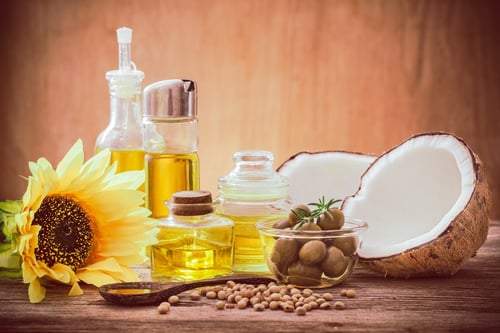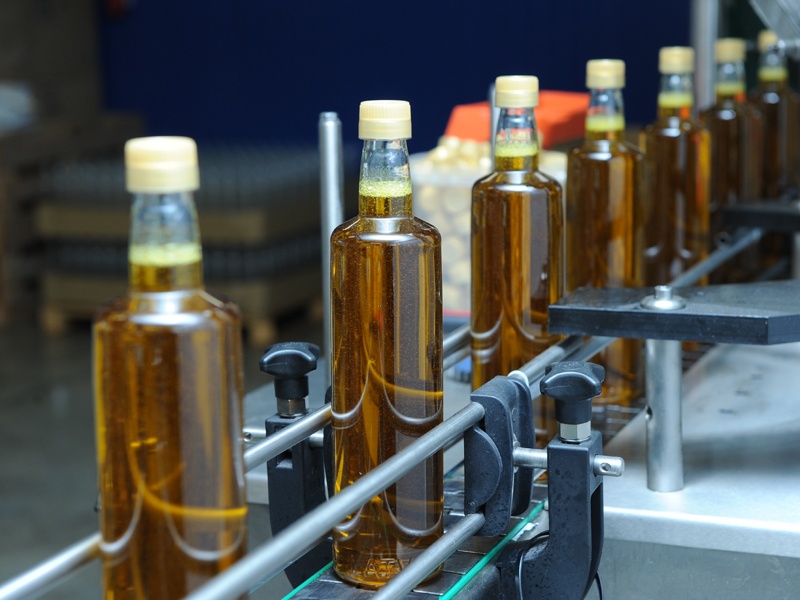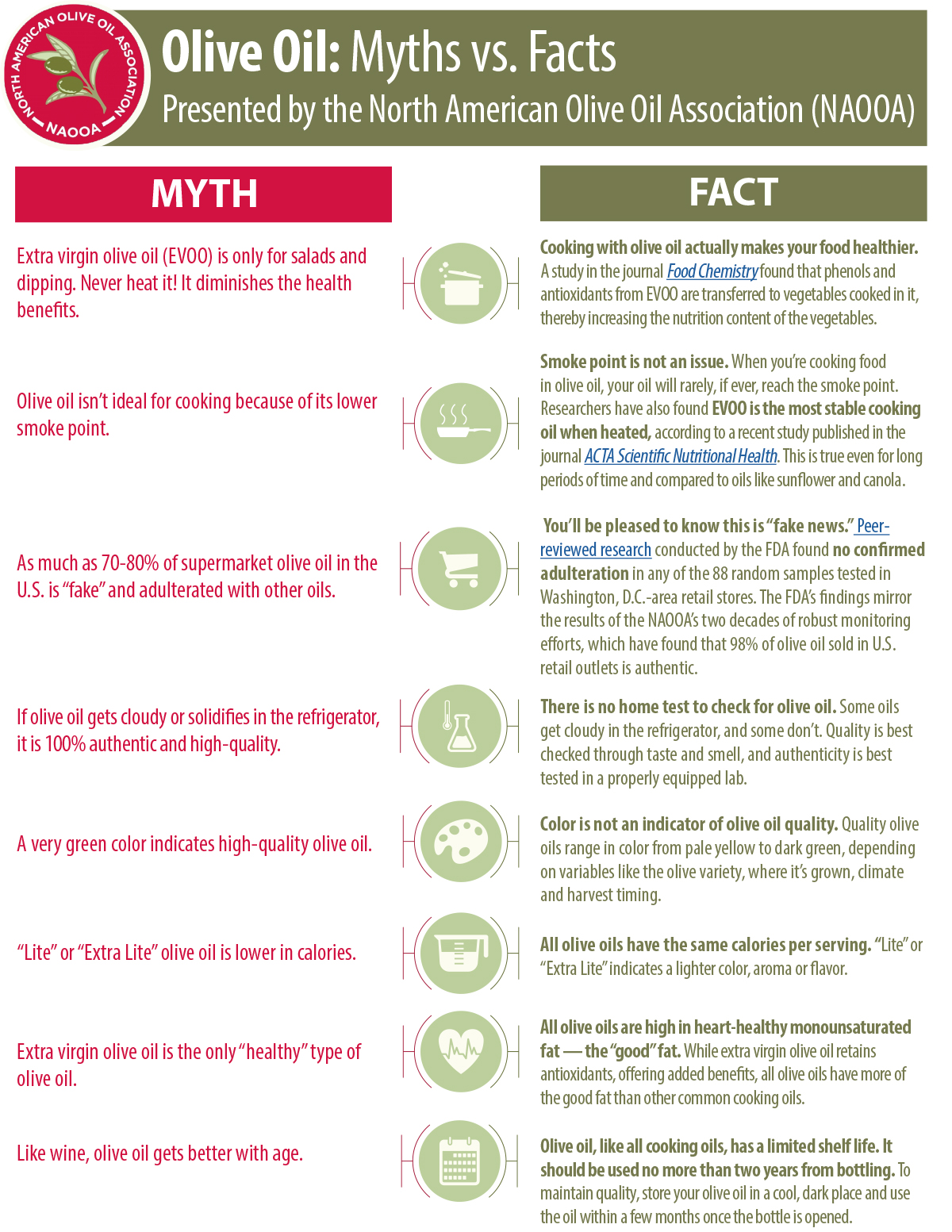.jpg?width=1152&name=canola%20(Medium).jpg)
Choosing the best oil to cook with has become an increasingly complex question; from EVOO to vegetable oil, there are dozens of choices in your average supermarket aisle. In this series, we examine the key differences between olive oil and other commonly used cooking oils to see how they stack up. While both olive oil and canola oil can be widely used in the kitchen there several distinguishing characteristics between them.
Extraction
Olive oil is created by crushing the fruits of an olive tree and extracting the juice. It has been produced this way for centuries and no chemicals or solvents are ever used in the extraction of any grade of olive oil. Comparatively, while some canola oil is extracted using expeller screw presses, the vast majority of canola oil sold includes oil that has been extracted from the crushed canola seeds with the use of chemical solvents such as hexane. (A product labeled as "expeller-pressed" canola should only contain oil extracted without solvents.)
Advantage: olive oil
Refining
Extra virgin olive oil is never refined and gets bottled as the natural, fresh juice from the olive fruit. Other varieties called "olive oil," including "light tasting" olive oil is made from refined olive oil blended with virgin olive oil (the "light tasting" olive oils simply have less virgin olive oil added in). The refining of olive oil is generally at moderate heat because all olive oil has been mechanically extracted. Canola oil, by contrast, is almost always refined. When canola oil has been extracted with solvents, it must be aggressively refined at high heat to remove the chemicals. Even when expeller pressed, canola is almost always refined because the flavor is not generally considered palatable. You can see the complex process by which refined canola oil is bleached and degummed in the following video.
Advantage: olive oil
Grading
Olive oil is graded according to standards that are defined by the International Olive Council, established in 1959, under the auspices of the United Nations, to which countries that produce over 95% of the world's olive oil belong. (2) Within these guidelines are very specific designations for the grades of olive oil. Canola oil production is not standardized to the same degree and the requirements for the product are solely based on the components of the oil and not the finished product. (3)
Advantage: olive oil
Fatty Acid Composition
Percentages can vary by sample, but both olive oil and canola oil have relatively high percentages of monounsaturated fat (MUFA). Research has proven that consuming monounsaturated fats has been linked to a reduction in risk factors for heart disease and stroke. Medical experts agree that when it comes to saturated fats, less is more; while both canola and olive oil are relatively low in saturated fats, olive oil has double the content of canola. On the other hand, higher levels of polyunsaturated fats (PUFA) have been shown to correlate with higher levels of inflammation and canola oil has more than double the PUFA of olive oil. (4) It should also be noted that oils higher in PUFA are less shelf stable and will go rancid more quickly when opened.
| Total Fat | MUFA % | PUFA % | Saturated % | |
| Olive Oil | 14g | 73% | 11% | 14% |
| Canola Oil | 14g | 64% | 28% | 7% |
Advantage: Even
Antioxidants and Polyphenols
Antioxidants and polyphenols that help prevent cellular damage from oxidization and guard against the oxidation of LDL cholesterol (see note below about health benefits) are found in abundance in extra virgin olive oils, and also other olive oils enriched with virgin olive oils. These compounds include oleocanthal that reduces inflammation and oleuropein and hydroxytyrosol that guards against the oxidation of LDL cholesterol. Research shows that the polyphenols unique to olive oil may be protective against a host of other chronic diseases including cancer, diabetes and dementia. When looking at olive oil and canola oil's overall antioxidant content, there is no contest. EVOO contains over 179% more antioxidants. (5)
| Oil | Antioxidant Content |
| Extra Virgin Olive Oil | 5972 |
| Virgin Olive Oil | 4949 |
| Olive Oil | 3281 |
| Canola | 327 |
Advantage: olive oil
Smoke Point and Stability Under Heat
It is a common misperception that canola oil is better for high temperature cooking due to its higher smoke point. However, when you look at the two side by side, the difference is just 50°F. Morevoer, recent studies have shown that smoke point is not a reliable indicator of stability at high heat. (6) In 2019, a study published by ACTA Scientific Nutritional Health found that refined oils higher in polyunsaturated fats proved to be less stable under high temperatures; oxidizing more quickly that oils lower in PUFA. The ACTA study evaluated the physical and chemical differences among ten commonly used cooking oils, including olive, canola, avocado, grapeseed and coconut oil and found that extra virgin olive oil is the most stable cooking oil.
| Type of Oil | Smoke Point |
| Extra Virgin Olive Oil | 410°F |
| Refined Canola Oil | 460°F |
Advantage: olive oil
Sustainability
Olive trees are a permanent crop where canola is planted and harvested every year. Permanent crops that are not tilled are gentler on the environment by reducing soil erosion and protecting biodiversity within the soil.
Olive trees remove carbon dioxide from the atmosphere. According to Francesco Serafini, head of the environment R&D department of the International Olive Council, “In the production of 1 liter of olive oil, olive trees remove 10 kg of CO2 from the atmosphere.”
Olive trees can thrive in dry climates where other crops would fail. Olive trees do not consume large quantities of water and prevent desertification. According to the IOC, 70% of the world's olive orchards are exclusively rain fed.
Olives are never genetically modified. Canola oil is made from rapeseed (Brassica napus L.) that has been bred to contain lower levels of harmful compounds like euric acid.(1) Based on the current guidelines available, canola is categorized as "high risk for GMO" according to the agricultural industry watchdog group, The Non-GMO Project, as some GMO canola plants were developed to be resistant to the Monstanto's herbicide Round-Up.
Advantage: olive oil
Flavor
Canola oil after refining is a neutral tasting oil. Extra virgin oil is known for complex flavor profiles, from bright and floral, buttery and even bitter. Olive oil and extra light tasting olive oil are more neutral-flavored, but still have some. Olive oil and extra virgin olive oil offer a range of flavor that can match any cooking style and also imparts antioxidants at the same time. (8) Olive oil is considered a flavor-enhancer that may allow you to use less salt in your cooking.
Advantage: olive oil
Health Benefits
The health benefits of olive oil have been well established. Currently there are over 1.3 million published studies on olive oil. This extensive research has proven olive oils efficacy in combating a variety of ailments, from heart disease and cancer to digestive and join health.
There is far less research to draw from when it comes to canola oil. Among the existing body of research, a few recent studies have touted the benefits of the PUFA in canola oil, which can help reduce low density lipoprotein (LDL) cholesterol levels. Typically referred to as "bad cholesterol" it seems likely that lowering LDL would be a good thing. However, when you consider the function of LDL in the blood stream, a different picture begins to emerge. Registered dietician and researcher Mary M. Flynn, puts it this way:
"LDL is not all “bad.” Its job is to carry cholesterol around the blood. That’s important because we need cholesterol for a variety of things like making some types of hormones and for healthy cell membranes. Higher levels of LDL are not considered “healthy” with regard to CHD risk, but there are no data showing that LDL of less than about 125 – which is an average number – makes any difference in CHD risk. In other words, the actual quantity of LDL is not a big deal.
What is important is the health of the LDL particles themselves because LDL that is oxidized can increase CHD risk, but non-oxidized LDL does not. Polyunsaturated fat, which is the predominant fat found in most seed oils, leads to increased oxidation. That means that while it’s true that seed oils will lower the level of LDL more than olive oil, those seed oils actually can produce an oxidized LDL, which can increase the risk of CHD." (9)
Advantage: olive oil
Cost and Value
When it comes to cost, canola oil is typically one of the least expensive cooking oils, priced recently at $3.49 for a 32 ounce bottle. One store brand 32 ounce bottle of extra virgin olive oil is by comparison selling for $6.99, which is double the cost of canola--and some high quality extra virgin olive oils can cost many times that. So on cost alone, canola is the hands down winner.
As for judging value, however, it is best to consider the cost per serving. If a recipe that makes 4 portions calls for 2 tablespoons of cooking oil, each person's serving of oil will be 1/2 tablespoon. If you use canola (at $3.49 for 32 ounces), the cost of the oil per person is about 2.5 cents. For the store brand extra virgin ($6.99 for 32 ounces), the cost per person is about 5 cents. (For a higher quality extra virgin that may cost $20 for 32 ounces, the cost per person would only be about 15 cents.) So when it comes to value, consumers need to consider all the health and other advantages olive oil provides and ask themselves whether olive oil at pennies more per serving provides more value for you and your family.
Advantage: You make the call...
Conclusion
When you compare both oils across these nine key categories, the advantages to cooking with olive oil are clear. From the chemical-free extraction process, to the unrefined natural goodness of extra virgin olive oil, to the health benefits from the copious amounts of antioxidants and polyphenols, to the wide variety of flavors available to suit any cuisine, and to an important value calculus, olive oil emerges as the clear winner of the battle roy-oil. Or as Flynn herself puts it:
"There’s no question that extra virgin olive oil is the better choice for your heart." (10)
Sources
[1] healthline.com
[3] gipsa.usda.gov
[4] ncbi.nlm.nih.gov
[5] oliveoilwellnessinstitute.org
[7] hsph.harvard.edu
[8] ncbi.nlm.nih.gov
[9] , [10] aboutoliveoil.org






 The North American Olive Oil Association is committed to supplying North American consumers with quality products in a fair and competitive environment; to fostering a clear understanding of the different grades of olive oil; and to expounding the benefits of olive oil in nutrition, health, and the culinary arts. | © North American Olive Oil Association. All Rights Reserved.
The North American Olive Oil Association is committed to supplying North American consumers with quality products in a fair and competitive environment; to fostering a clear understanding of the different grades of olive oil; and to expounding the benefits of olive oil in nutrition, health, and the culinary arts. | © North American Olive Oil Association. All Rights Reserved.